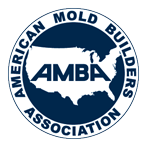By: Brent Borgerson
December 17, 2009
Of great interest to buyers, accountants, quality managers, toolmakers as well to, of course, molders, is the projected service life of an injection mold for thermoplastics. Many people in the injection mold industry use the SPI Mold Classifications as guides for estimating the expected life of a mold. The common classifications are:
- Class 101
For a life in excess of a million cycles, with a hardened mold base (minimum of 28 R/C), hard molding surfaces (minimum of 48 R/C) with other details of hardened steel. Guided ejection is mandated as are other features such as wear plates for slides. Parting line locks are mandated, and corrosion resistance is suggested for cooling channels. This is the highest quality of the SPI classifications, usually accompanied by the highest price.
- Class 102
This is specified for a lifetime not to exceed 1 million cycles. This features the mold base hardness of class 101, molding surfaces (cavities and cores) also feature the hardness specified in 101, and functional details are heat treated. Parting line locks are recommended. Guided ejection, wear plates, and corrosion resistance of water passages are not mandatory, but dependent on expected total production quantities. If expected cycles approach the maximum, then these features should be specified.
- Class 103
Aimed at molds intended for under 500,000 cycles. These are molds for low to medium production needs, and corresponding price ranges. Mold bases are at least 8 R/C and cavities and cores in excess of 28 R/C. Any extras must be agreed upon.
- Class 104
For less than 100,000 cycles and limited production. These are lower priced molds. The base can be aluminum or mild steel. Cavities and cores can be of the same or a metal agreed upon.
- Class 105
These are for cycles less than 500 (prototyping only) and are very inexpensive. They can be of cast metal or epoxy.
These SPI, or Society of the Plastics Industry (http://www.plasticsindustry.org), classifications should and do take much of the guesswork out of estimating the useful life of an injection mold, but not every class 101 mold is the same, and this is true in all the mold classifications. Classifications indicate, but don’t guarantee quality.
No matter the class of mold, how the molder treats the mold can determine the life of the tool. I have seen and heard of aluminum molds that have lasted for years, indeed decades, and conversely witnessed class 101 tools rapidly turned into junk. Much of what the molder does, or how he treats the tool will determine the life of the mold.
Never over-clamp (use more than required clamp force) the mold not only will you wear, stress, or deform the steel prematurely, you will peen closed the vents, leading to a viscous circle of more injection pressure being dictated and then even more clamp force.
Don’t neglect preventive maintenance on the tool, devise a schedule or consult generic schedules, or better yet consult a reputable mold builder. Taking the mold down for a day or two for PM can add years of life to a mold. If you don’t have in-house tooling capabilities for this you can contact a mold builder such as Matrix Tooling Inc. A great part of mold PM is disassembly and cleaning and replacing components such as springs, o-rings, and pins. Many molding shops designate a person for these relatively simple but extremely important tasks.
Don’t skimp on mold protection, sometimes called low clamp pressure. You want to be set “fat” enough to stop the mold from clamping well before a possible stuck part is crushed by the mold faces. Your press maker can train you in this if there are any doubts. Many mold protection settings can be defeated by closing the mold too fast. Never slam a mold closed. Where there are slides or other actions and angle pins, you should slow the movement before they engage. The possibility of saving a half second on the cycle here could cost days of lost production while repairing the damage that a defeated mold protection could produce.
Daily cleaning of mold faces and lubing components such as pins and slides will extend the life of any class mold. Use the right lube for the job: FDA and medical grease where required and high temp grease for hot running tools such as those running PEEK, PEI, PPS and PSU, where mold temps can exceed 400°F. Remember it is the film of grease a few thousands of an inch thick that does the job, so don’t goop the grease on. It is counterproductive and can attract dirt.
Again the SPI classifications can give the molder a good idea of the potential lifetime of an injection mold, but not all molds in any one classification are made equally. One should always have their molds designed and built by a reputable mold builder. A mold builder such as Matrix Tooling Inc. will stand behind and care for every mold the build over its extended lifetime.
_horizontal_white_536x129.png)

